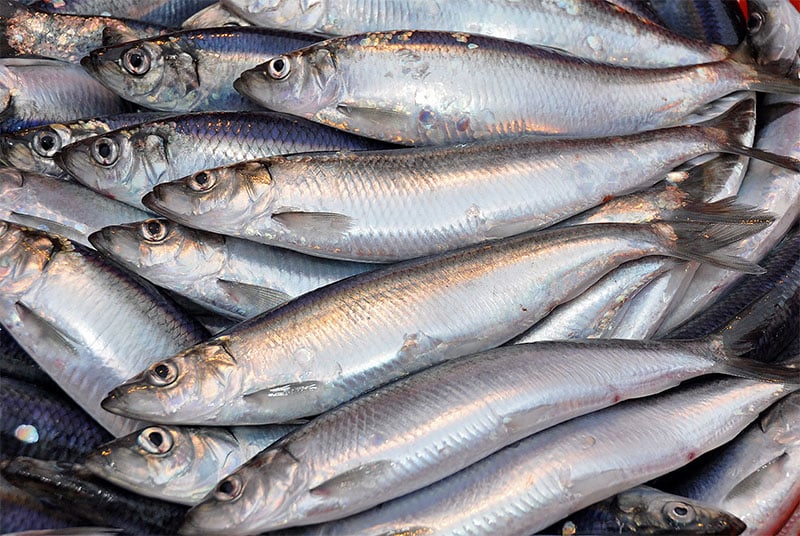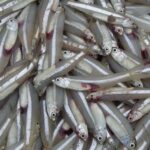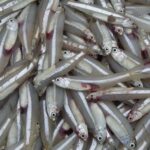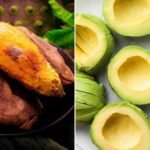Herring – Small but Mighty
Herring is a small, oily fish commonly found in temperate and tropical seas, including the waters of Vietnam. Due to its high content of omega-3 fatty acids, herring is considered a “superfood” for supporting the treatment of high cholesterol and protecting cardiovascular health.
According to the United States Department of Agriculture (USDA), 100 grams of herring can contain up to 1,700 mg of omega-3 – on par with salmon but at a much lower cost. This type of fatty acid has the ability to reduce neutral fats (triglycerides), lower LDL (“bad” cholesterol), and increase HDL (“good” cholesterol), thereby reducing the risk of clogged arteries, heart attacks, and strokes.
Moreover, omega-3 in herring helps reduce inflammation, stabilize heart rate, and slightly lower blood pressure – crucial factors for individuals with cardiovascular disease, obesity, or diabetes.

How Do the Japanese Enjoy Herring?
In Japan, herring is not only a delicious dish but also an integral part of their ancient culinary culture. The Japanese consume herring in various ways: from salted herring served with rice, grilled herring accompanied by soba noodles, to nishin sushi (herring sushi). Even the herring roe (kazunoko) is a must-have dish during the New Year holidays, symbolizing fertility and abundance.
The Japanese habit of regularly consuming fish – especially oily fish like herring – has been linked to their lower rates of cardiovascular disease and stroke in numerous studies.
Herring in Vietnam: Inexpensive, Delicious, and Widely Available
In Vietnam, herring is commonly found in the central coastal provinces such as Quang Binh, Quang Ngai, and Nha Trang, as well as northern provinces like Quang Ninh. Fishermen catch herring year-round, especially during the warmer months from March to July.
You may encounter herring in rustic dishes such as herring salad (a specialty of Ly Son and Phu Quoc islands), grilled herring wrapped in banana leaves, or herring braised with pepper. Regardless of the preparation, herring retains its natural mild oiliness, sweet flavor, and aromatic taste – perfectly suited to the Vietnamese palate.
Economically, herring is significantly more affordable than salmon or mackerel, making it an excellent addition to your weekly menu without breaking the bank.

How to Cook Herring to Retain Its Nutritional Value?
Omega-3 is a heat-sensitive nutrient, so excessive frying or cooking may diminish its benefits. Therefore, the ideal methods of preparation are:
- Steaming or lightly boiling to retain almost all the nutrients.
- Oven-baking or moderate charcoal grilling.
- If using salted herring, soak it to reduce the saltiness before cooking and serve it with fresh vegetables.
A tip when preparing herring is to combine it with anti-inflammatory spices such as ginger, turmeric, garlic, and onion to enhance its cardiovascular protective effects.
Precautions When Eating Herring
Despite its numerous benefits, there are a few considerations to keep in mind:
- Individuals with high blood pressure should avoid excessive consumption of salted or fermented herring due to its high sodium content.
- Pregnant women should opt for fresh herring and avoid products preserved with industrial salt, as they may contain trace amounts of nitrites or mercury.
- If you are taking medication for high cholesterol, consult your doctor before supplementing with high doses of omega-3 from dietary supplements.
Science Confirms: Regular Herring Consumption Reduces Cholesterol
A report from the National Institutes of Health (NIH) states that supplementing with approximately 2–4 grams of omega-3 per day from fish like herring can reduce triglycerides by 25–30% within a few weeks. Additionally, the American Heart Association (AHA) recommends consuming oily fish like herring at least twice a week for long-term cardiovascular health.
A global study published in the BMJ journal also revealed that replacing red meat with small fish like herring, sardines, or anchovies two to three times a week could save up to 750,000 lives annually by reducing the risk of cardiovascular disease and cancer.
Conclusion: A Budget-Friendly Superfood
Herring – once a familiar, humble fish – is now recognized as a “superfood” for its ability to support cholesterol management and prevent cardiovascular disease. You don’t need expensive dishes; including herring in your diet just 2–3 times a week, prepared simply and correctly, can significantly contribute to safeguarding your and your family’s health.
7 Types of Fish You Should Buy: Nature’s Superfood, Affordable and Nutritious
Introducing the 7 nutrient-rich wild-caught fish that you need to know about! Uncover the secrets of these aquatic powerhouses and learn how to incorporate them into your daily meals for a healthier, more nutritious diet. It’s time to take your culinary adventures to new depths and reap the benefits of these delicious and nutritious catches.



































